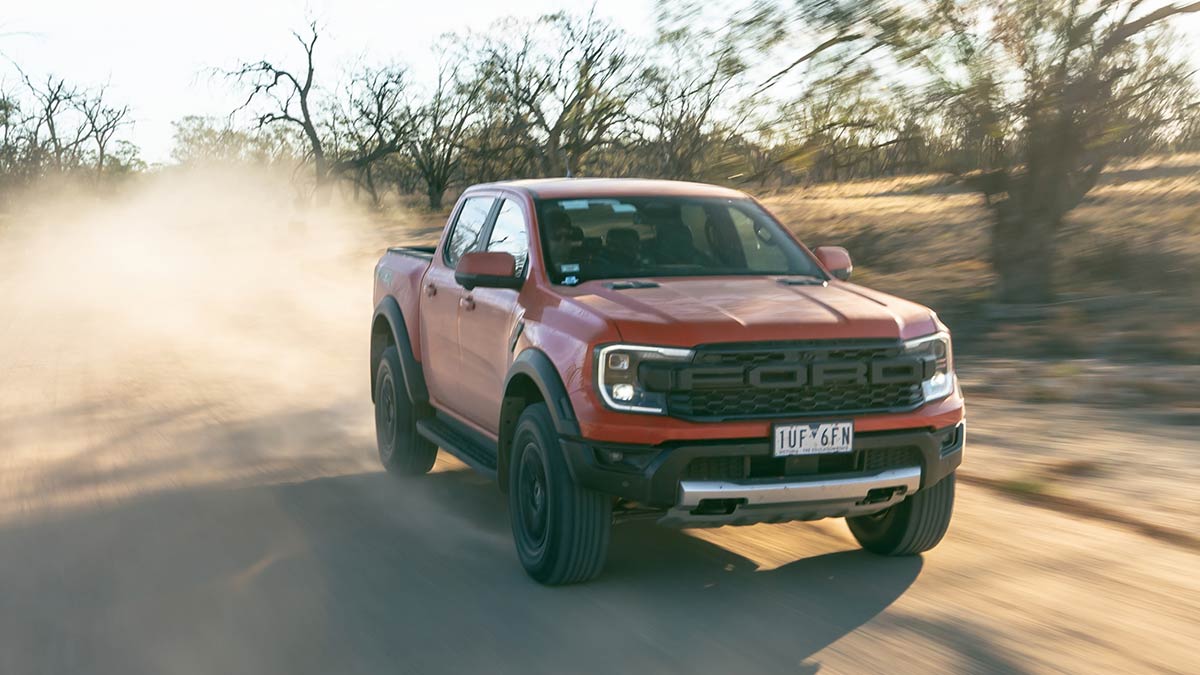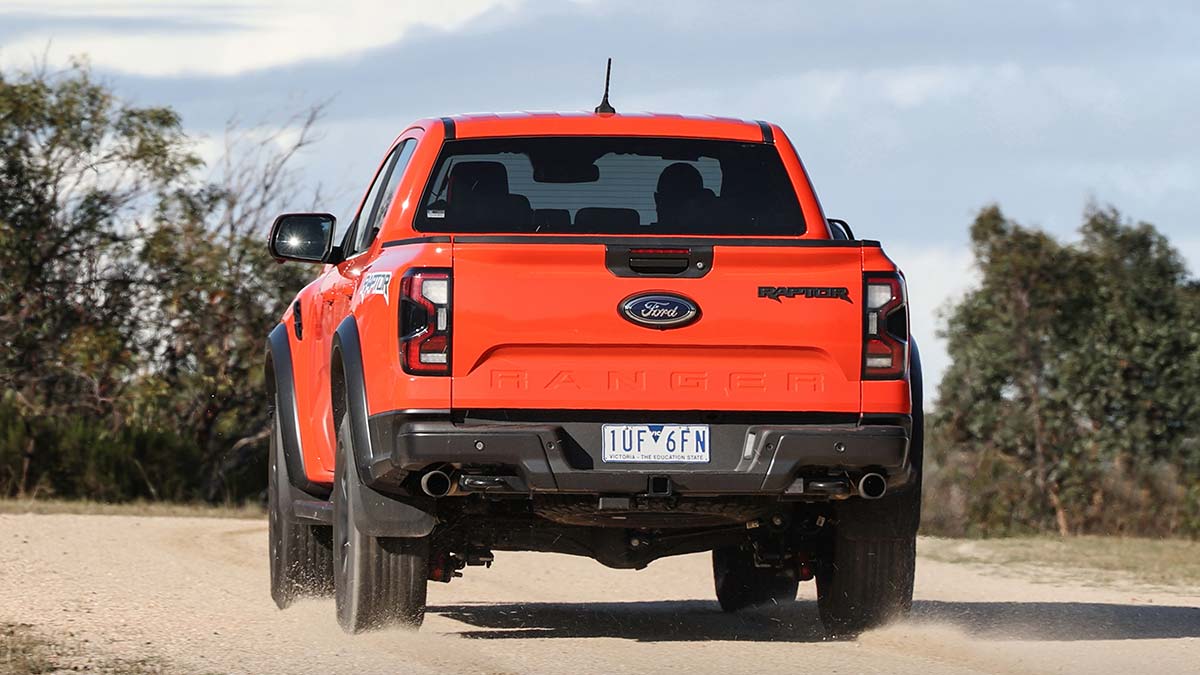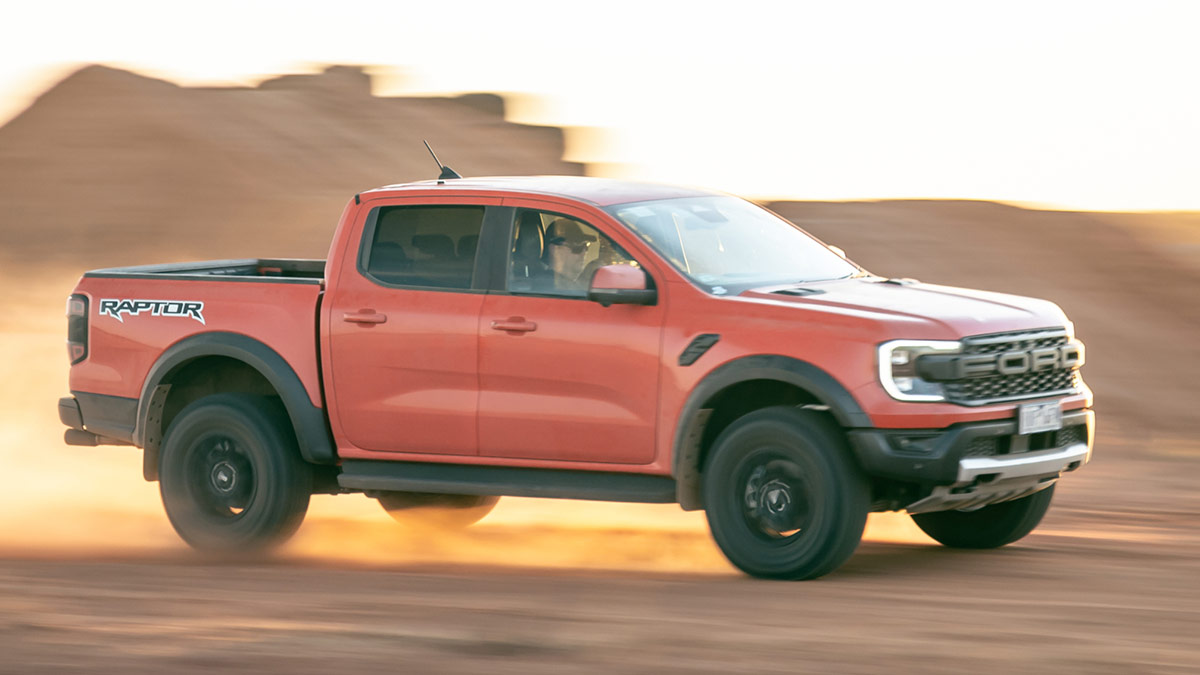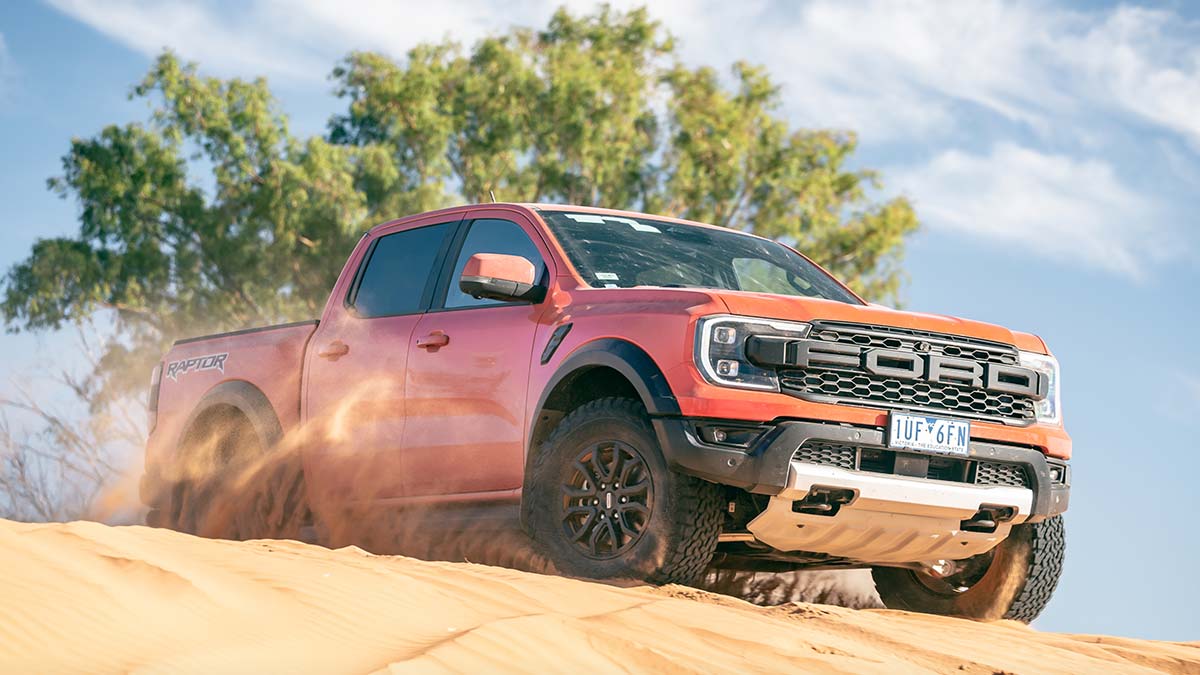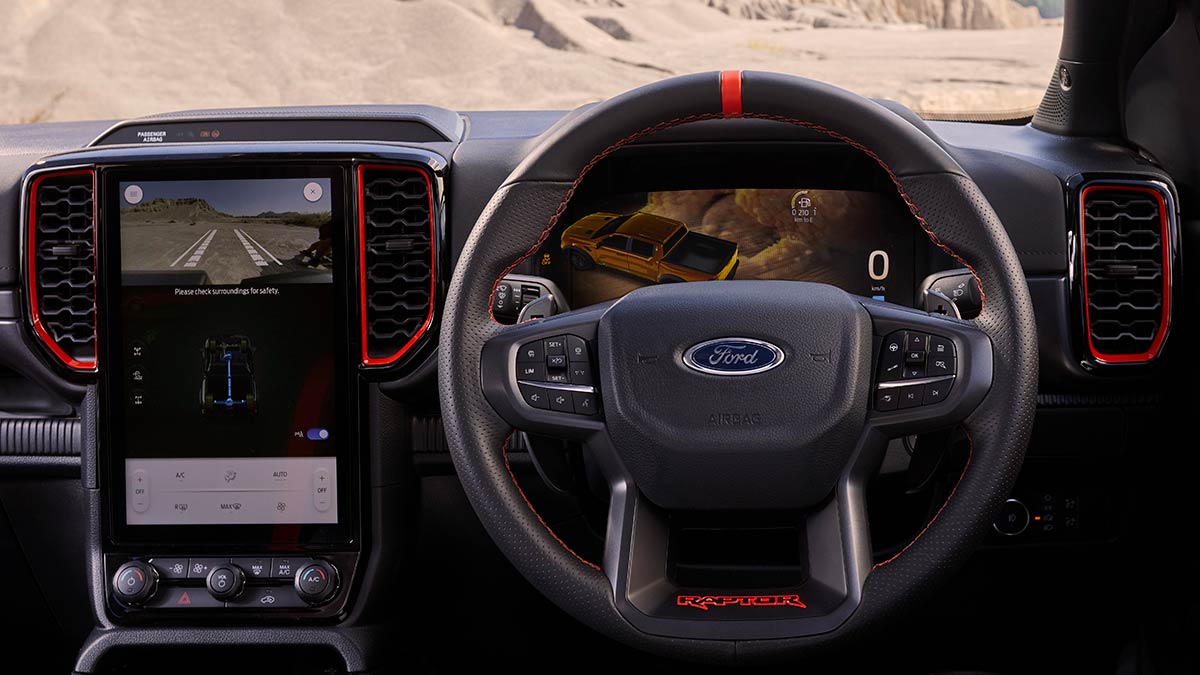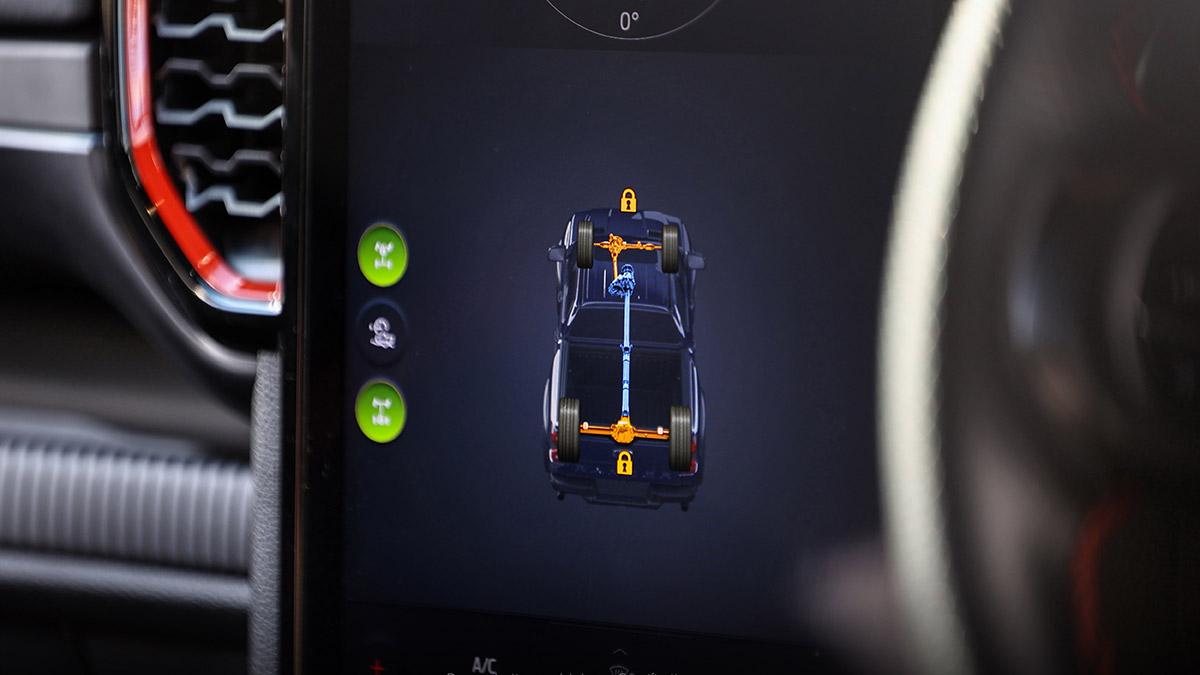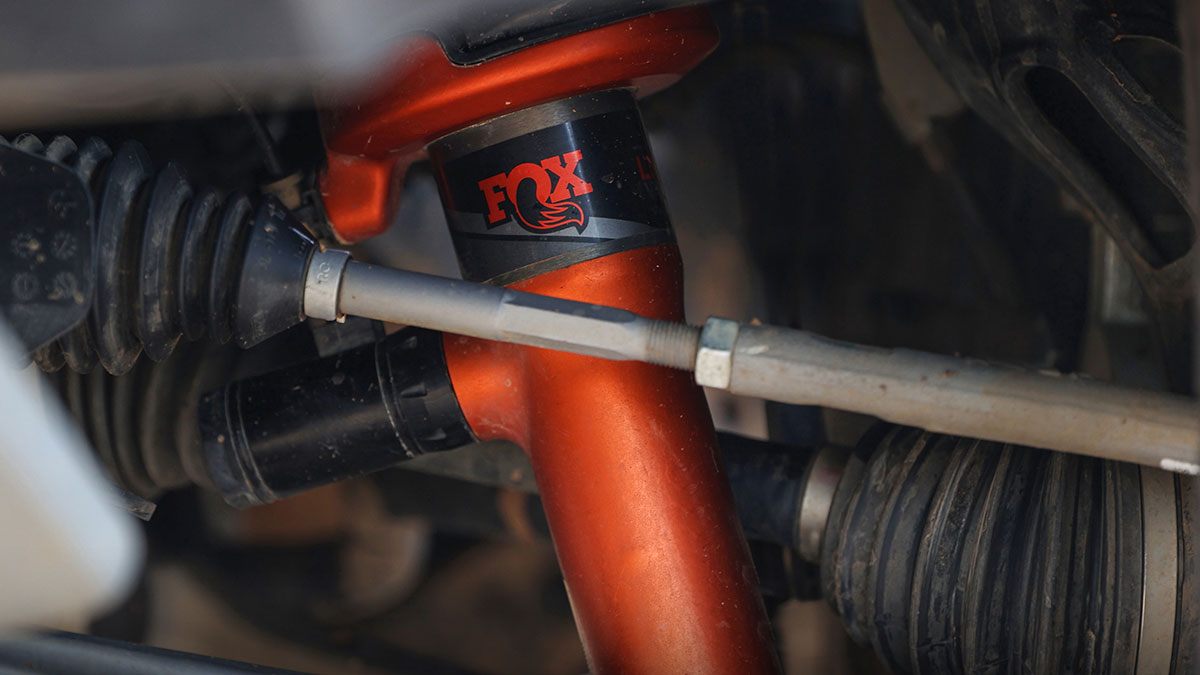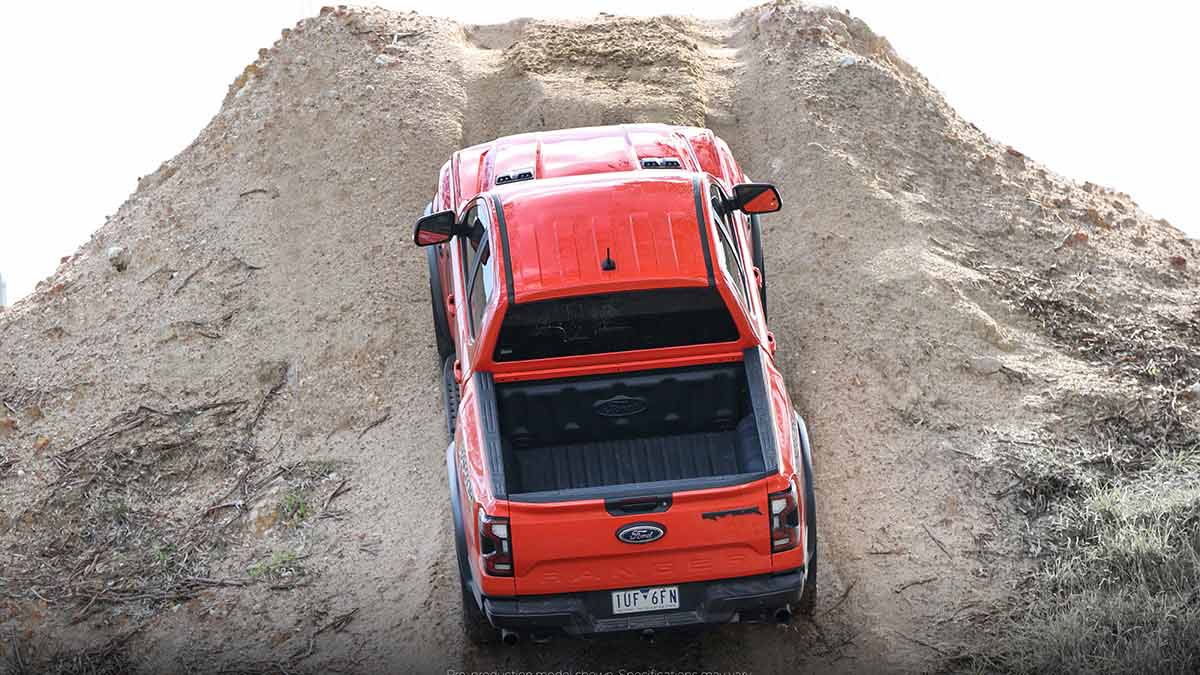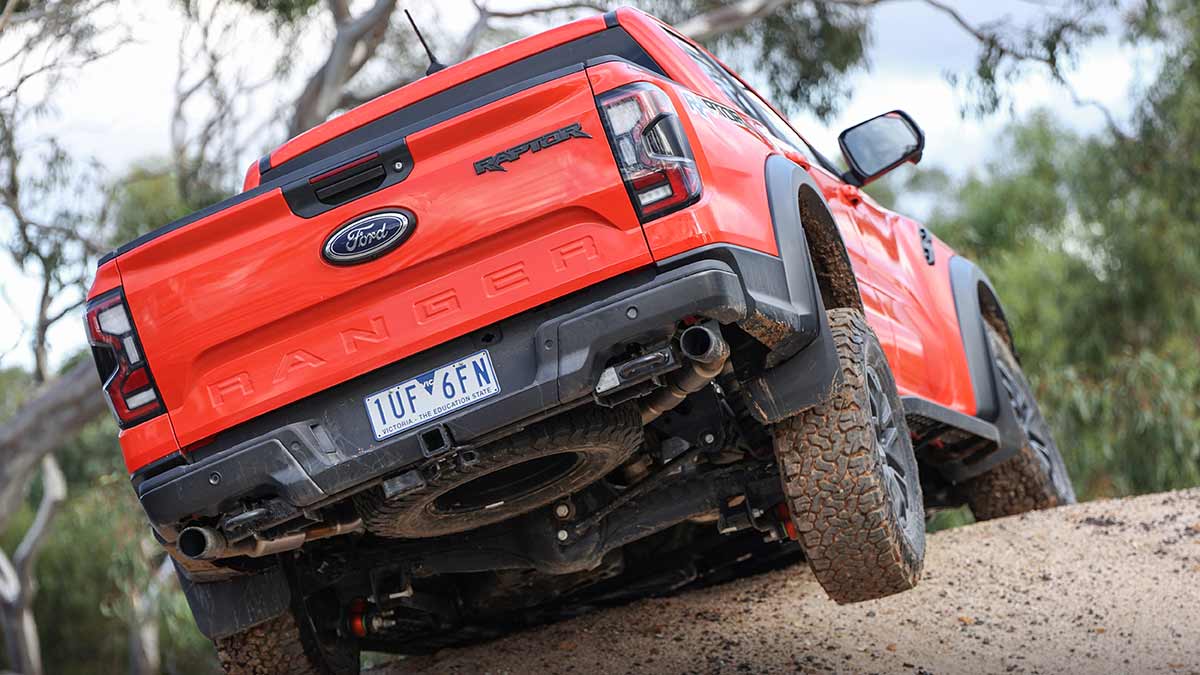The Foton Tunland joins Australia's dual-cab ute market as an affordable mild-hybrid diesel under $50,000, offering strong capability against tough competition.
Rapturous reception: 2022 Ford Ranger Raptor first drive review

The Ford Ranger Raptor is the apex predator of four-door utes. The second-generation model, which is Australian-engineered and designed, packs more power and has more finesse and features than its predecessor.
The new Ford Ranger Raptor has ditched its diesel engine for petrol power. The result is a more focused off-roader that is now impressively fast on-road.
Every tradie, off-road enthusiast and urban warrior will want one, especially if they’ve spent time behind the wheel.
Yes, it swallows fuel. But it swallows deep-rutted tracks, tricky bitumen curves and around 700kg of people and equipment.
In short, if you can afford it … and are prepared to wait on delivery … you won’t be disappointed.
The only downside (and Ford is far from the only victim here) is the wait for delivery will be some time in 2023 unless you were one of the first of the 5000-odd people who have already ordered a vehicle.
On this page
- How much does the Ford Ranger Raptor cost?
- Is the Ford Ranger Raptor safe?
- What's the Ford Ranger Raptor like inside?
- What's under the Ford Ranger Raptor's bonnet?
- Is the Ford Ranger Raptor efficient?
- How does the Ford Ranger Raptor drive?
- Should I buy one?
How much does the Ford Ranger Raptor cost?
The Ford Ranger Raptor is priced at $85,490 plus on-road costs. A sticker set for the tub is $500 and beadlock-capable wheels are another $2,000. White is the only no-cost paint choice, with all the other colours adding $675 to the bill.
Given most buyers won’t go with the white one, expect a driveaway price of around $61,700 in Melbourne.
That is around $6,000 more expensive than the outgoing Raptor, though there is more than enough extra equipment to justify the jump. Beyond the engine, buyers pick up a spray-in liner in the tub, matrix LED headlamps, Fox “live valve” shock absorbers and a reinforced chassis.
The Raptor is covered by a five-year, unlimited kilometre warranty. Service intervals are every 12 months or 15,000km. The first five visits will cost $1,726 ($329 for the opening four services, then $410).
Rivals to the Raptor are few. The Walkinshaw-enhanced Volkswagen Amarok W580S at $81,490 plus on road costs represents the nearest competitor for on-road performance, while the $82,450 Jeep Gladiator is the obvious alternative for off-road ability.
Is the Ford Ranger Raptor safe?
The crash-test data is not yet in, but it is a safe bet the Ford Ranger Raptor will score well.
The interior is fitted with nine airbags and there are a pair of Isofix child restraints in the outboard back seats.
Safety software includes autonomous emergency braking that extends to reversing manoeuvres, adaptive cruise control with stop-and-go and traffic sign recognition, lane-keep assist, front and rear parking sensors and a 360-degree camera.
The blind-spot monitoring also operates when towing, providing owners have input the length of the object they’re hauling. It’s a smart touch that will be appreciated by anyone towing a decent boat or caravan.
What’s the Ford Ranger Raptor like inside?
A bespoke steering wheel and sporty seats (apparently inspired by the F22 jet’s seat) accentuate the Raptor’s leading role in the Ford Ranger line-up.
The 12.0-inch infotainment touchscreen houses a dedicated off-road page, where drivers can digitally engage the front and rear diff locks and the hill descent control, as well as use the front camera to monitor the terrain ahead of the Raptor.
The digital driver’s display is 12.4-inches of impressively high resolution pixels and there’s a 10-speaker Band & Olufsen sound system.
Wireless Android Auto and Apple CarPlay are standard, supplemented by a wireless phone charging pad.
Satellite navigation is also standard, though owners will need to renew their subscription after 12 months to continue taking advantage of the real-time traffic monitoring.
Storage space throughout the cabin is good and there’s extra room to secure items under the rear seats.
What’s under the Ford Ranger Raptor’s bonnet?
Replacing the turbodiesel engine with a 3.0-litre twin-turbo V6 petrol mill is the biggest change in the second-generation Raptor. Put that down to overseas markets preferring petrol over diesel.
While it does restrict the Raptor’s range compared to the previous version (something Ford’s accessories partner ARB is working on in the form of a long-range fuel tank), it also endows the Raptor with a far more responsive drivetrain.
Outputs of 292kW and 583Nm are numbers normally seen in a performance car. Towing capacity is still more than adequate for most owners at up to 2.5 tonnes.
The same engine is also used in the Ford Bronco Raptor sold in the USA.
Is the Ford Ranger Raptor efficient?
Ford quotes claimed combined fuel consumption of 11.5 litres over 100km for the Raptor. An 80-litre fuel tank gives a theoretical range of just under 700km.
The reality is buyers can expect to see fuel use north of 14 litres/100km when driving around town, even if they’ve selected “2H” which disables power to the front wheels to improve economy.
Like most new vehicles, the Ford Ranger Raptor requires 95 RON fuel.
What’s the Ford Ranger Raptor like to drive?
Hot hatch speed in a four-door ute nudging 2.5 tonnes is always going to be an entertaining mix.
Throw in a set of shock absorbers that typically see duty in off-road racing vehicles and you have a vehicle more than capable of carving up traffic irrespective of the terrain.
Its on-road manners are better than any four-door ute in the class. From behind the wheel, drivers could easily forget they’re not driving an SUV.
The pitch and dive that often besets powerful high-riding vehicles when accelerating and braking is effectively quelled by the Fox shocks automatically maximising resistance at the front and rear in near-instant response to whichever pedal the driver is depressing.
Ford hasn’t quoted a 100km/h time but we expect the Ranger Raptor to be somewhere in the md six-second territory - about as fast as the just-retired Ford Fiesta ST hatch.
Yet the Ranger is also happy to lope along at 40km/h with the 10-speed automatic transmission keeping the engine in a high gear to improve fuel economy and ease of low-speed driving. There’s no disguising the Ranger is a big vehicle when parking, but that’s what the park assist software is there for.
The launch route didn’t give much opportunity to test the diff locks, despite navigating some decent slippery ascents.
That is a positive thing, indicating the Raptor will have the competence, clearance and articulation to tackle highly technical sections without needing much in the way of aftermarket accessories.
A 2.3mm front bash plate protects the Raptor from rocks, along with shields for the engine and transfer case. The likes of bull bars, rock rails and winches have been developed by ARB in conjunction with Ford.
There are seven drive modes, including the “Baja” mode that transforms the Raptor into a high-speed off-road racer.
The active exhaust flaps open to improve the V6 soundtrack and an “anti-lag” system keeps the turbochargers spinning for up to three seconds after the driver lifts off the throttle. This has the effect of maximising acceleration when the driver gets back on the accelerator.
Should I buy one?
If you are prepared to wait and can afford to drop $90,000 on a four-door ute, yes.
Ford isn’t quoting a delivery time for someone who orders a Raptor right now, but if you want a Ranger Wildtrak V6 turbodiesel, you’ll be in the queue until May, 2023. Based on that, expect the Raptor to take longer to deliver.
Once delivered, there’s no doubt it delivers the goods. The Ford Ranger Raptor is a unique proposition in the four-door ute segment and this version is only going to enhance that status.
The information provided is general advice only. Before making any decisions please consider your own circumstances and the Product Disclosure Statement and Target Market Determinations. For copies, visit racv.com.au. As distributor, RACV Insurance Services Pty Ltd AFS Licence No. 230039 receives commission for each policy sold or renewed. Product(s) issued by Insurance Manufacturers of Australia ABN 93 004 208 084 AFS Licence No. 227678.
